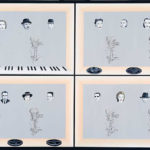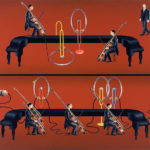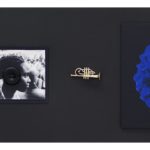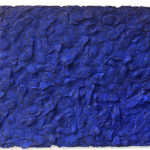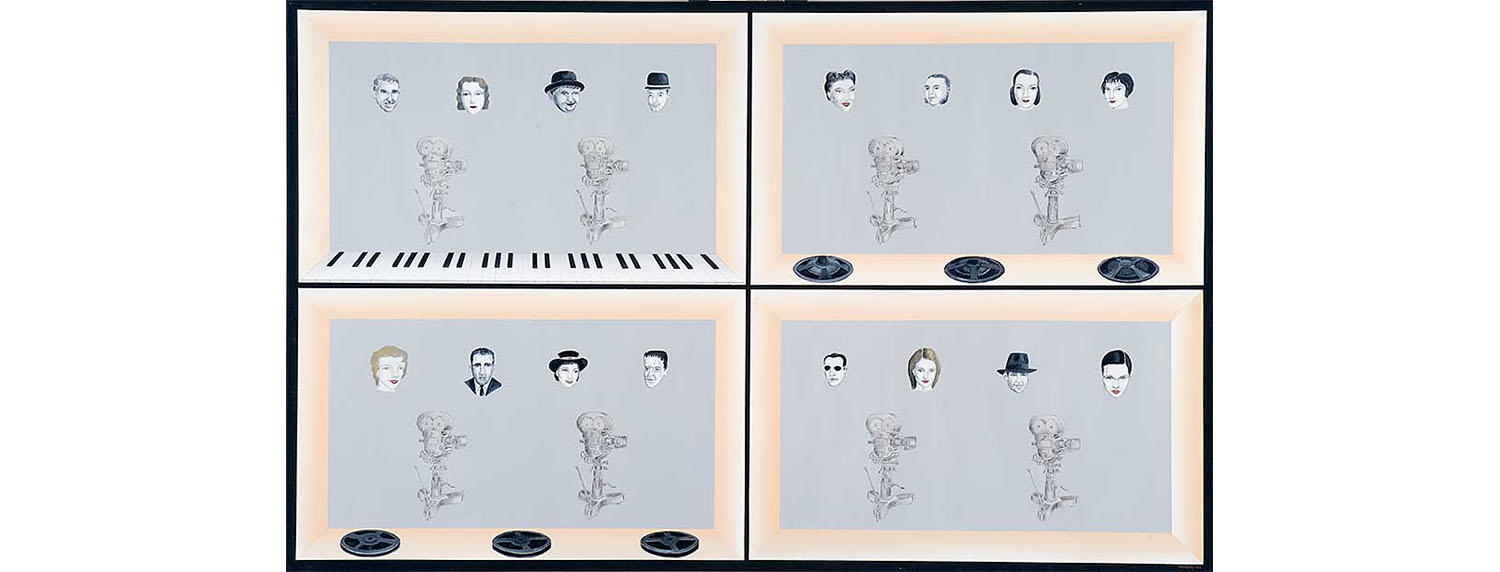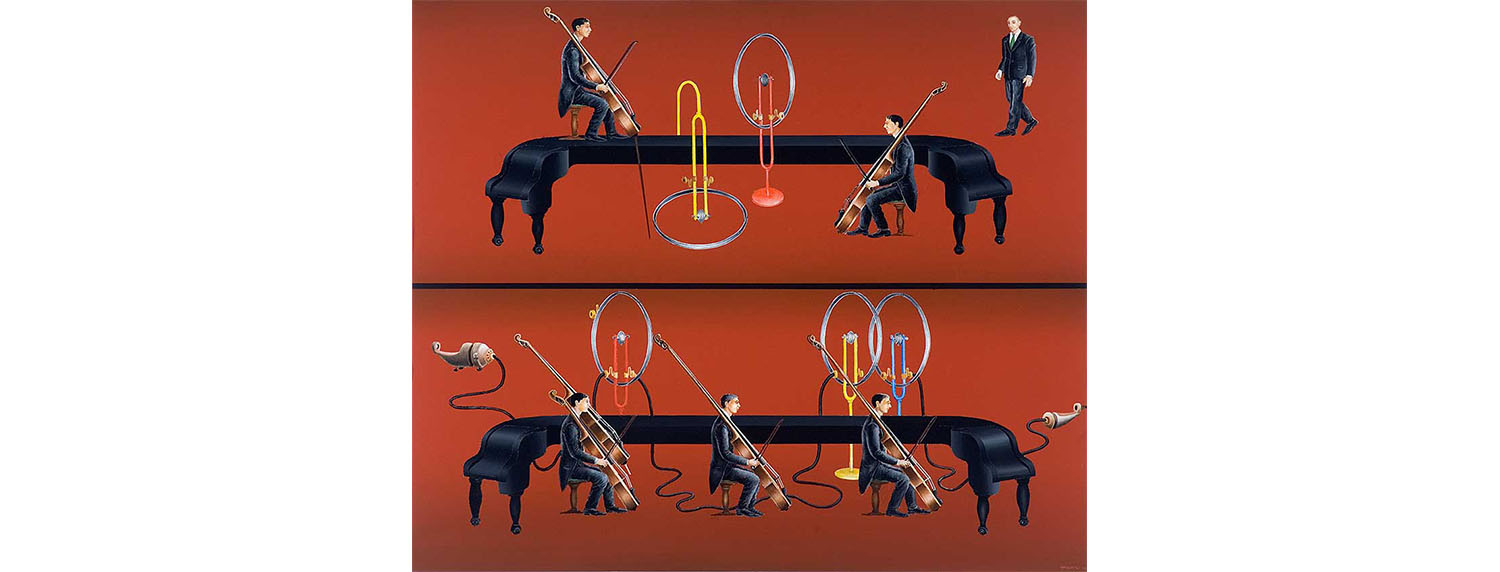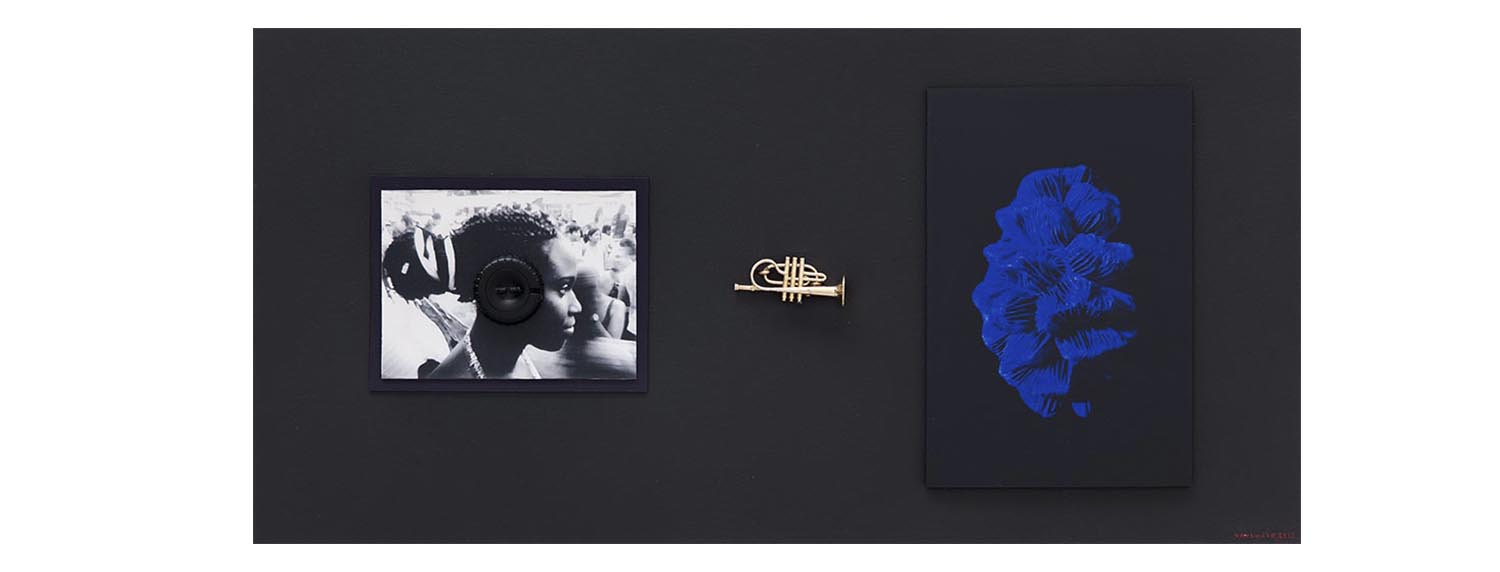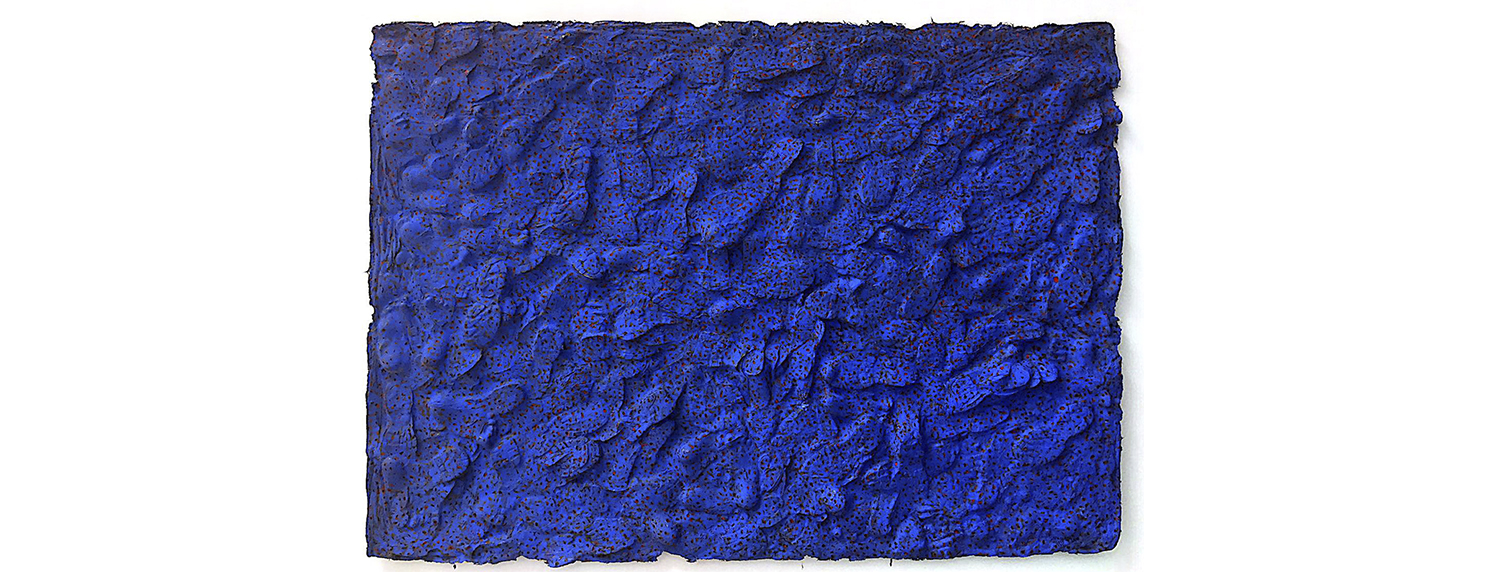Seeking one word to understand Vauluizo´s work, it should be tension for those observing his current actions. His painting and drawing go through a dual path without becoming parallel and tight for having this path, concomitantly creating two universes, ranging from reading the history of art and daily facts of its existence, here and now. It is from this tension – a review of the painting in its stages, streamlined for a critical and creative reading, and its interior and personal universe, views and experiences, that is possible to absorb with greater amplitude the extremeness of his work, built through an action that is visceral and incisive in both acting and creating. Tension accredited as an immediately recognizable brand, especially since it has elements very characterizer, from a contemporary writing arising from usage and filtering, a decoding of several urban symbols (graffiti and comics are recurrence absorbed in his passage), to a permanent joy/allegory in depicting a big city, without forgetting the ironic, corrosive, sometimes violent and destructive humor, and that in its transformations takes on a mediation between Brazilian constructivism and international minimalism. It is a work that brings us a graphic-visual vocabulary that asks, inquiries, questions.
He was born in Aracaju, Sergipe, in 1952. He moved to Bahia in 1955. He started painting as an autodidact in 1970, following an expressionist guidance. In mid-70s, he learned about the Brazilian production of concrete and neoconcrete art and entered the School of Fine Arts of Universidade Federal da Bahia in 1976. In the 80s, he returned to figuration and started to work in the creation and appropriation of images, through varied means, tending to a sort of synthesis operation, where irony becomes one of the important exercises to reflect its most frequent subjects – art itself, sex, high culture and mass culture, biogenetics, and urban symbols such as graffiti and comics and, more recently, his personal history and as a citizen – to a narrative of reading the contemporary world,in a repertoire that not only addresses subjects of our own time, but social, political, and cultural history shaping the human existence through the centuries, in a work essentially characterized by drawing, painting, but with the presence of photography, cinema, and electronic media that form the art today.
You are an artist whose creation, or even for an existential value, seeks study and research when creating your art. Taking this reasoning as a starting point:a) Is there an understanding or awareness of this “cultural” quest within your creation?
I belong to a generation that witnessed a change of paradigms in many sectors of the Occidental contemporary life. We lived the “Years of Lead” of the military era here in Brazil, witnessed the ideological polarization of the world with the Cold War stresses; we saw the fall of the Berlin wall, built a new behavioral sense through counterculture, witnessed the verticalization of science and technology, having as a consequence the most spectacular transformation in human history communication patterns, which is the internet, we used as the travelling flow as never before, we joinedglobalized economy, etc. All these are factors that imply in a change of the contemporary man and, as an artist, for me, should be reactive to what is happening in the world and, in this sense, its work should be covered of a repertoire that addresses subjects that are relevant to its own time, if not clearing it. The profile of the artist today is very different from the romanticized characteristics of the XIX century and also from the concepts and ideations of modernism. Therefore, at least to my perceptions, producing art requires an update of interdisciplinary repertoires, even as a strategy of survival, in a society that has acquired new complexities.
b) To what extent does this intense verticality influence your creation?
Culture is a core matter for my work. I do not produce “visualities” for the sole purpose of contemplation. In fact, the “visualities” I build are not exclusively visual. First of all, they try to operate with meanings of different origins that are subverted for new functions of meaning. Take as an example a work that belongs to the collection of the Museum of Modern Art of Bahia, a grand piano suppressed in its width and percussive functions. It is an object recognizable due to its solemn beauty, mark of a grand piano. However, it has a profound strangeness since it is hollow and useless, because it reverberates a strange noise or significance that do not belong to the grand piano as we know it. We recognize the piano, but there is a strange sense that it does not belong to it anymore, something like an “obtuse meaning” from Roland Barthes, something insistent as a presence, but hard to grasp. It is the produce of a shuffling of signs, it is also a skiff in the emptiness that is exposing. First of all, the piano is an instrument that holds a lot of the occidental culture symbolic, but if its simultaneously fulfilling another role, the role of a skiff, it means joining it to other senses of cultural affirmation, such as the death of culture, death of the art, or the end of history, etc.
c) In this quest, is there any fear that the feeling, or its excess, or emotion, are not good advisors for artistic creation?
To be honest, I am not sure about the applicability of the concept of feeling in my work, in any of the procedural instances when I am creating them. What matters to me are the criteria I use, decisions I make to reach a purpose that is never decisive for an artist, let alone definitive. Something that can be decided in a work and denied in the other. The artist deals with the possibilities of meanings that may or may not open a chain of feelings. To produce art is an adventure in the emptiness and the rational attention of your choices becomes indispensable, combined to a sense of opportunity on the intelligible. The feeling, if any, is an effect that will belong to the spectator.
Continuing from the previous question, what is from the tradition, from the encounter with it, in the art you make? And, additionally, who are your influences from this cultural history? Or what are of your empathy or taste?
I maintain a constant exercise in examining the old traditions of art, especially regarding High Middle Ages and Renaissance. Maybe it is a symptom, since it is a historical period of profound transitions that societies from that time experienced, in addition, of course, of seeking the origin of what encompasses the drawing of the modern individual construction. It is possible that my interest is, broadly, a comparative way of analogically glimpsing at the transformations we are living today. In may work, specifically, I support the maintenance of traditional medias, such as drawing and painting, adapting them to contemporary narratives and senses. But it is necessary to emphasize that I do it taking into consideration that we are in a time where art has expanded itself in its roles and intensively lives the paradigmatic rupture by its reproduction techniques, reference to Walter Benjamin´s book, The Work of Art in the Age of Mechanical Reproduction, with the presence of photography, and cinema and, more recently, the popular electronic media as the support that already characterizes art today. About naming specific influences, it does not make sense anymore, nowadays, because my interests are way too fragmented and my work today has a dependence nature towards the extra art discipline, thus aside from art theories.
There is a great worry with the “human” in your work. What is the reality that surrounds you that is reflected in your work?
“Human” is present by the cultural production interface. In fact, I am not interested in the experiential reality, particularized, or framed in a representational form of the individual that I am. Before that, I need to know why, and what I am inside social dynamics in which I am involved. Therefore, abstractions promoted by culture are interesting to me. From there, I draw my narratives, which are attempts of outlining some sort of profile based in a confrontation of different forms expressed in different societies, including the city I live.
This “reality” brings a great deal of humor, irony, social criticism to your drawing. Is this your signature to what is perceived as your creative work? What would be the other factors? But if they are not, or if they are so, are there others that you perceive as being very personal in your work?
Irony is a tool of undeniable communicational appeal and necessarily does not distinguishes a sense of value, whether depreciative or something acceptable. Its presence comes as a dialectical reinforcement between my action and the spectator´s view. When I build an eyepiece (only on lens) with Ray-Ban leg and the inscription “Polyphemus”, I join the ancient Greek culture and its mythical cyclops blinded by Ulysses with the consumerist pattern of our society. It is a discourse about two species of blindness, it is a game, a joke through culture that shapes some unnerving characteristics in both. When I draw Hercules hooded with his pelt from the Nemean lion, along with Batman, with his bat pelt, and write “A Continuing Pathology” besides the images, it is about the same playful game with the identical perversion of two mythical heroes separated by four thousand years. A canvas painted by an onomatopoeic tissue, “Bang Bang”, merged by the song “Samba do Avião”, by Tom Jobim, and subtly revealing Pão de Açúcar´s profile, unfurls an irony social criticism value, which slides into black humor. These are some of the strategies that, in general terms, characterize my work as something formally fragmented, but that acquires certain unity due to the conceptual framing characteristics that, to some extent, individualizes it.
The art that you create brings a period sensitivity or feeling, of here and now?
Of course, the own fragmentary nature or tendency for deconstruction, the shuffling of references or what Baudrillard calls aesthetic agnosticism are attributes that seem to me are in conjunction with the characteristics of our time. I started my career still under the aegis of the modernist ideology consensus. Creating art implied a liberty of action limited to a geography set by conceptual frameworks that artistically outlined the way you acted inside the world. Perhaps a generational matter, that wielded the desire, many times unconscious, of breaking the references in many sectors of life, explains a series of misunderstandings experienced from my work. I remember applying for a scholarship to New York University in 1980. My examiner´s name was Louis Finkelstein, an esteemed North-American art critic, responsible for nothing less than launching of the career of the painter De Kooning. It was impossible for him to absorb, in an artist like me, with a current neoimpressionist work, having dedicated some years of my early 30 involved in a polarized production within minimalist managements. That sounded like an incomprehensible stain. Such schizophrenia was not allowed. It is worth noting that Philip Guston, from the same generation as Finkelstein, was one of the seminal painters of American abstract expressionism and when Guston, due to a internal need of a pictorial truth breaks up with action painting and moves to free figurative narratives, debating the matters of American culture, he fell in disgrace before the art world. He was only recovered twenty years later by the generation of critics and artists from the 80s who, like me chose him as thematic myth. I use these examples to position the effort demand required to create art. The here and now that you mention may have differentiated levels of acuity that consequently relativize the view to which the artist is directed to. The fact of living in a city displaced of the planetary culture, and in a peripheral country, no longer removes the artist from the condition of belonging with respect to the more sophisticated cultural constellations, and here is where my here and now interest lays, in the desire to locate which representativeness we have, and in what way we can make the contribution of a possible ethical construction, in the ontological sense, or at least identify the subtle pitfalls that the world of today, with its sophistication, builds in relations of culture and power.
Where does the memory – emotional, social, political, cultural – enters in the creation of your work.
They enter as the core of an eagerness. By the way, just now you were asking me about feeling, which I insist in not classifying as a component of my work process but, to be more accurate, if there is a feeling, it is as an element that precedes, or at least justifies, this status of desire or necessity to do what I do, and I do it using these overlaps or flows that dimension any conscious existence. All these are factors that are currently present in my work as elements of discourse. And they were acquiring spaces throughout my path as I developed as person and artist, things, by the way, blurred in my personal life style. There is almost no distance or distinction of my action as an artist from the political and social man that I am. The consciousness of any representative for purposes of generations after mine has helped to support a functional specificity where I live and create, precisely to tack such factors, making their importance more clear and thus contributing to expand the quality of that consciousness, which, after all, is the main instrument for the construction of the individual and one´s relation with the social, the political, and the cultural.
What is biographical in your art?
Much of the art being done today is connected to the diminishment of art/life boundaries. My work has some elements that connects to this type of strategy as I project some particularities of my own life as an artist and citizen: what I read, what I consume, some habits, manuscripts, air line tickets, museum tickets, tranquilizers and antidepressants that I use, etc. These elements try to build some sort of spatiality perspective with what surrounds me within what we are accustomed to call consumer society. With that, I get to operate with the invisibilities I have as an artist, that is, it is an interest that once again relapses in the matter of representation that living implies, which is to say that an artist or a citizen is someone encoded in the desire for recognition in their environment, is more than a narcissistic simplification.
Your works transmit a work oriented to the debate of the speech in the work of art, by its composition, colors, figures, spaces. What causes you to have this concern? Does the origin of your painting lie in the painting itself?
I started creating art at 17 years old in a very intuitive manner, with a free figuration and an irresponsible experimental sense, due to the ignorance of youth, and an environment that did not help at all due to the absolute lack of circulation of information. I immediately realized that I had to seek this externally and so I did. My first important acquisition was the contact with the concrete and neoconcrete arts, commanded by Waldemar Cordeiro and Ferreira Gullar, respectively. I was infected by a great excitement with the debate level in the disputes between Cordeiro and Gullar. One of the problems of modern utopias – among them the question of the autonomy of art – was on the agenda. That took place in the 50s; therefore, more or less twenty years went by, until my contact with the theories and the production of concretism and neoconcretism. For some years, I worked focused in problems in the line of constructivism, centered in those Brazilian updates and observing Rio de Janeiro´s looping by the hands of Helio Oiticica, Lygia Clark. But the desire of a narrative and forceful narrative was already expressed by me in a tormented coexistence heavily guarded. In this occasion, I was invited by INAP (National Institute of Plastic Arts), Paulo Sergio Duarte, to be a part of a range of individual exhibitions in the Museum of Modern Art of Rio de Janeiro, known as Project ABC (Project of Brazilian Contemporary Art). When I got to the museum to set aspects to assemble by exhibition, I got to see and exhibition called Between the Stain and the Figure, with the critic from Minas Gerais, Frederico Morais, as a curator. From this exhibition, I was interested by the presence and forcefulness of Jorginho Guinle´s painting and especially by an artist unknown at the time: Leonilson. I had access to a writing from Ronaldo Brito regarding Guinle´s works, which supported some discreetly guarded intuitions to unravel a fold in the course of what he had been doing. From there, I resumed narrative and critical painting combined to themes of the art history itself and disciplines guiding the reading of the world in different perspectives.
Do you believe in a work of purely imaginary artistic intervention? Or the real as a fact, news, happening, is an imperative data in this creation?
The art has different functions in different times and different societies. But its entirety is added to a principle of reality, whether religious, cultural, mythical, conceptual, or self-referential.
How is your creation process sparked?
It is connected to the flow of my own life. In a specific way, in the notion of labor, it can be triggered in several ways: from the reading of a book, a poem, a movie, a picture, or an observation about any event, politics, economy, even an innocuous fact may carry a possibility.
What does encourage you to be a visual artist?
To not have the perspective of a Borges or the acuity of a Benjamin.
How do you feel or see the moment of the visual arts now? The market? Your work? How do you feel yourself present in this universe?
I see it as a moment full of possibilities. From the 80s forward, there was a series of changes mediated by a criticism, contaminated by the interdisciplinary introduction in art that has been enrichening and multifaceting its possibilities. Post modernism, feminism, multiculturalism, sexism, market criticism, etc. are presences that have been a highly politicized tone to art today. This coexistence has not always been peaceful in interests that expand the boundaries of we are used to understanding as art – and I find that extremely positive, as long as the due attention is paid to the charlatan implications that the art market and its permissive interest can cover. As for my work, I consider it as an element within this conjunction of factors that permeate the world today, and its an objective point of view in the insertion of the market is mediated by Paulo Darzé Galeria, who insists on settling my temperament refractory to visibility, which seems to be a paradox, but it is a temperament. In this sense, I am kind of a Duchampian: half invisible, half silent, playing chess.
(Interview/January 2009)


